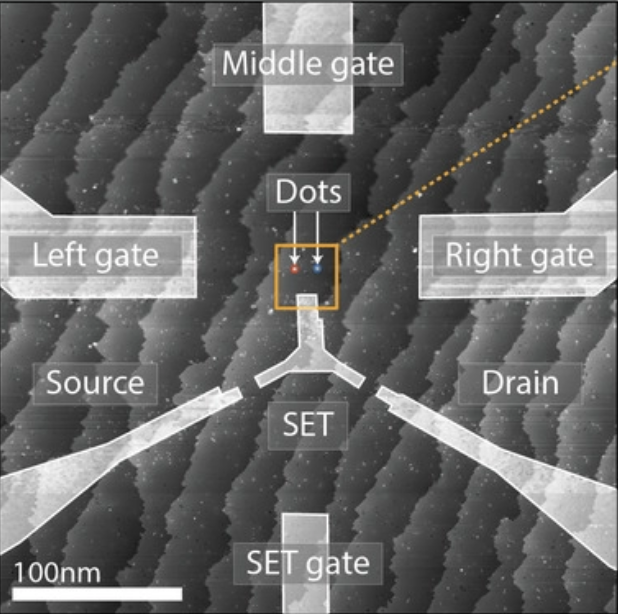Insider View
- Silicon Quantum Computing announced a novel technique that precisely maps the position of individual nuclear spins in a silicon chip.
- This novel technique, combined with their atomistic modelling capability, maps out the exact atomic arrangement of nuclear spins within the quantum processor and deepens understanding about the role of nuclear spins on silicon qubit operations.
- Critical Quote: “This result is an important milestone in being able to engineer and understand the impact of the local atomic environment of our qubits, as we continue our progress towards delivering a functional quantum processor at scale,” — SQC Founder and CEO, Michelle Simmons AO
PRESS RELEASE — Australian quantum computing manufacturer, Silicon Quantum Computing (SQC), announced a novel technique that precisely maps the position of individual nuclear spins in a silicon chip – a significant achievement in the field of quantum sensing.
“This result is an important milestone in being able to engineer and understand the impact of the local atomic environment of our qubits, as we continue our progress towards delivering a functional quantum processor at scale,” said SQC Founder and CEO, Michelle Simmons AO. “Our team has used entanglement, an inherent property of quantum computers, to map out where the nuclear spins are positioned in the silicon lattice, with atomic precision.”
This novel technique, combined with their atomistic modelling capability, delivers two key benefits. Firstly, to map out the exact atomic arrangement of nuclear spins within the quantum processor in a non-destructive manner. Being able to sense exactly what exists at the microscopic scale in the location of your qubits provides a great insight into how the qubits will behave.

Secondly, the unique knowledge gained deepens the understanding of the role that nuclear spins have on the operation of qubits in silicon. This knowledge allows the team to use their globally unique atomic precision manufacturing technology to optimise the design of their processors for maximum quality and efficiency as they scale.
“This highlights why it is essential to understand and control a quantum computer’s environment at the atomic-scale,” says Dr Ludwik Kranz, the lead author of the paper Atom-based magnetic field sensors published in Advanced Materials on 9 February 2023. “By understanding how the nuclear spins in the local environment affect the entangling gates, we can more efficiently design and optimise the next generation of devices tailored for real-world use cases.”
To read the full paper Atom-based magnetic field sensors published in Advanced Materials, visit the website on https://onlinelibrary.wiley.com/doi/10.1002/adma.202201625.
Further information regarding SQC’s Atomic Integrated Circuit:
In 23 June 2022, SQC announced it had fabricated the world’s first quantum integrated circuit at the atomic scale which delivers on a challenge first postulated by pioneering theoretical physicist Professor Richard Feynman in his famous 1959 lecture Plenty of Room at the Bottom.
In this lecture Feynman asserted that if you want to understand how nature works, then you have to be able to control matter at the same length scales from which matter is constructed – i.e., you must be able to control matter down at the length scale of atoms. Sixty-three years after Feynman first put forward this foundational theory, Simmons and her team have proven out this conjecture and built an integrated circuit using atomic components in silicon.
This milestone is one of a series of goals that SQC will present this year as it scales its quantum hardware to take on heavy duty computational tasks that cannot be performed by traditional computers.
If you found this article to be informative, you can explore more current quantum news here, exclusives, interviews, and podcasts.

















